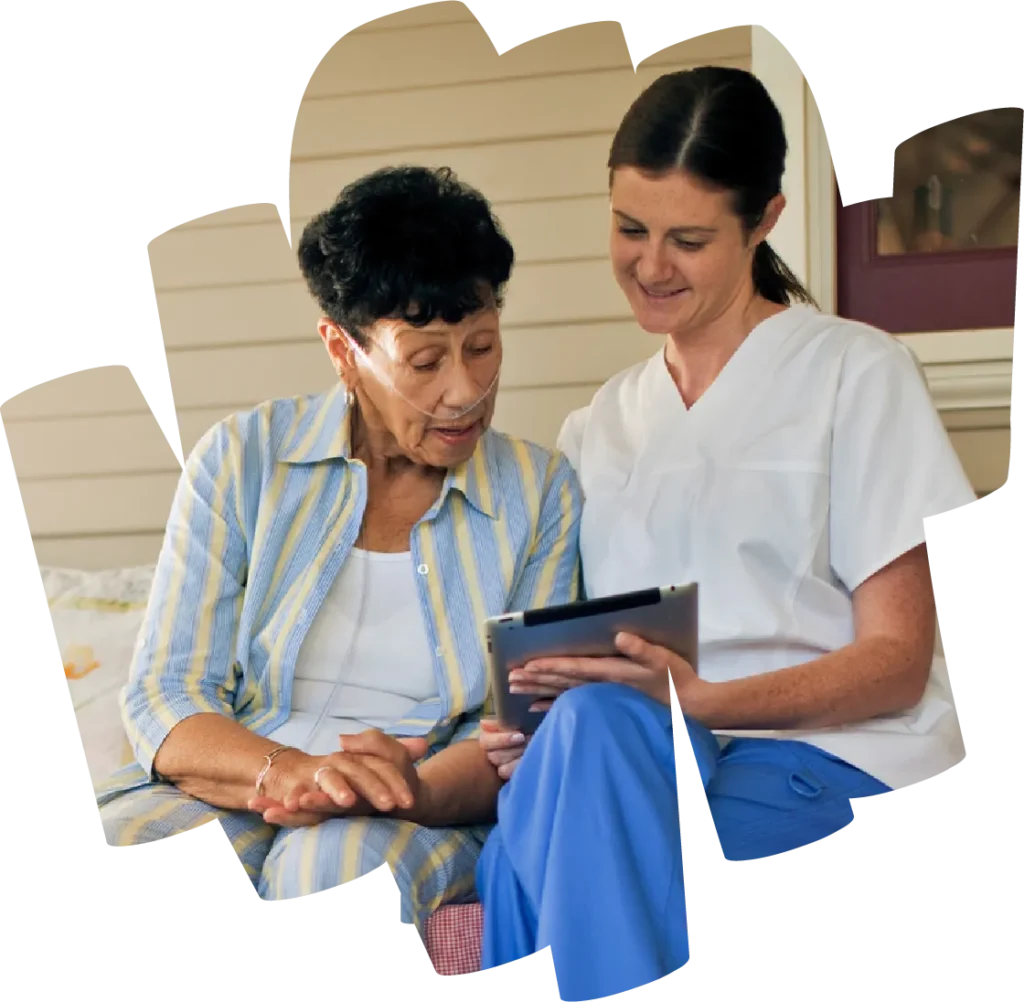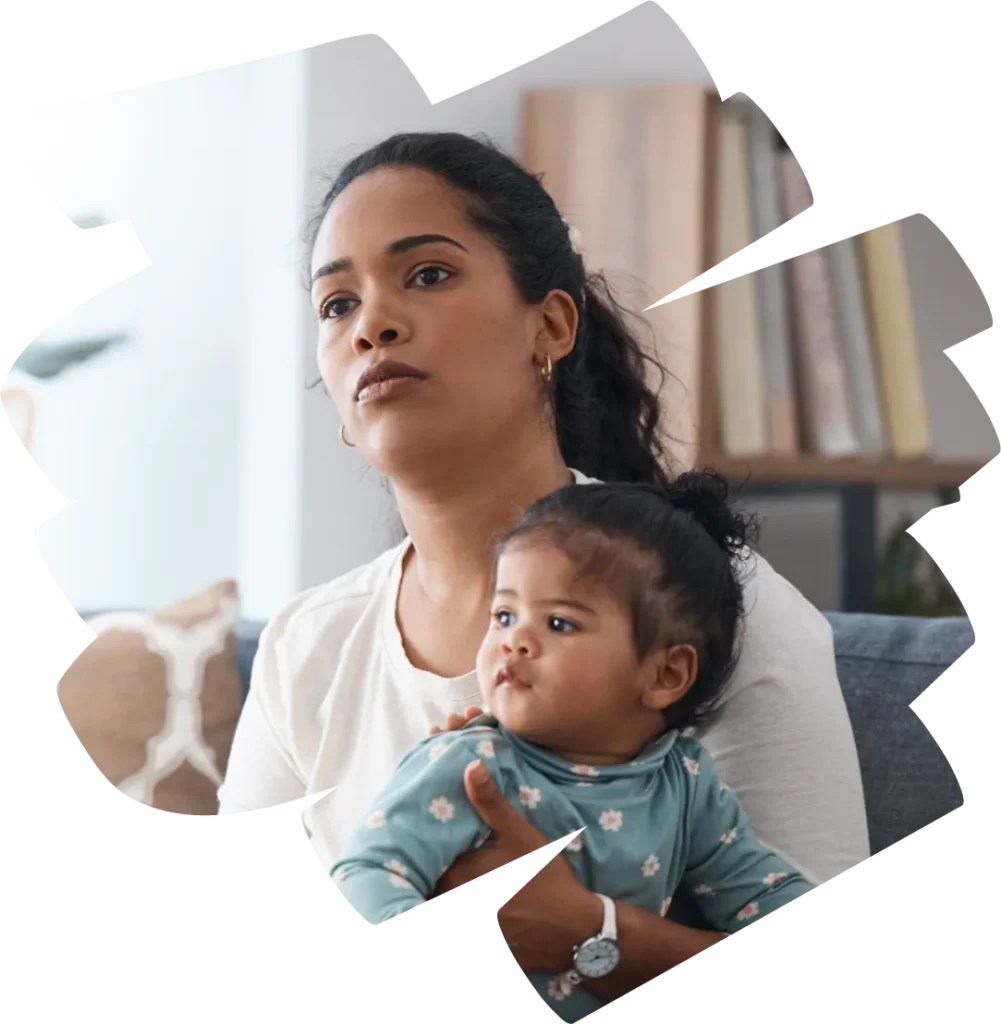When it
happens to you know what to do.
Every person using medical equipment at home needs to be ready for a power outage.





About
For people using medical equipment at home, a power outage can be life threatening. With severe and unpredictable weather like heatwaves, storms, bushfires and cyclones on the rise, it means the power could be out more often; potentially for more than a few hours at a time. It’s important that you know what to do if it happens to you. Everything you need to get started is right here.
As a person using medical equipment at home, you are among the most vulnerable in our community. You need power the most.
But the reality is, only 7% of people using medical equipment at home have access to back-up power and 68% mistakenly believe that their power will be restored before others1.
Even if you’ve notified your energy provider that you’re a Life Support Customer, you still need a Plan. Because there, in that unplanned event, it’s up to you and your carer to know what to do.
Because unfortunately, in extreme weather, it’s not always possible for emergency and essential services to help every person or household immediately; and that includes people relying on medical equipment at home to keep them safe and well.
Of course you should always call 000 in an emergency, but having your Plan means you’ll know what to do if the power goes out; whether it’s for a few hours or for days.
Then, your Plan can kick into action while your power company works hard to get the power back on for you.
We’re asking you to:
Check
Plan
Do
Check
the ‘Power Outage Checklist’– it’s the first step to completing your Plan.
Plan
ahead with your support people by completing your ‘Power Outage Plan’ and share it with those who you’ll rely on for support in your community.
Do
So when the power goes out, you’ll all know what to do.
1 Findings from the Australian Energy Foundation Report ‘Better outcomes for energy consumers using life support equipment at home’. This was funded by Energy Consumers Australia in 2022 and outlines key findings from over 4,000 Life Support Customers surveyed.
Watch the explainer video
My Power Outage Checklist
Start your thinking here
This Checklist is the first step to completing your Plan. Start here to get the right conversations and thinking happening. Then, together with your support people, you’ll be able to create a Plan that’s right for you. So when the power is out, you’ll know what to do.
And remember, always seek the guidance of your doctor or other qualified health professional with any questions you may have about your health or a medical condition.
1.
Support people
Have you talked with the people around you?
Read moreless
- Be sure to talk with your doctors and care team.
- Be clear on who can help you when the power goes out.
- Let your carers, service providers, family, neighbours and other local people in your community know what help you might need in a power outage.
- Register your needs as a Life Support Customer with your power company.
2.
Safety essentials
Have you thought about everything you need to keep you safe and well?
Read moreless
- Know what medical equipment you need to be working, and for how long, to keep you safe and comfortable.
- Consider a back-up power source (like a generator or battery).
- Be sure to have a three-day supply of your essential medications.
- Make sure you have a three-day supply of non-perishable food and water at home.
- Don’t forget about what your pets might need too.
3.
Communication
Have you considered how you’ll communicate and receive information?
Read moreless
- Have a back-up power source for your mobile phone (like a portable charger, a car charger, or power bank).
- Make sure all numbers are saved in your mobile phone (e.g. neighbours, carers, power company).
- If the internet and phone lines go down, you might need a battery-powered, or hand-crank radio so you can stay updated on weather conditions and emergency information.
- Have conversations with people in your local community and beyond about staying in contact during a power outage (assuming that they may be affected by the same power outage).
4.
Light
Have you thought about how you’ll see in the dark?
Read moreless
-
Make sure you have flashlights/torches or battery powered lights.
TIP: avoid using candles to reduce fire risk. - Have extra batteries.
- Be sure to place your back-up lights in an easy-to-access place in case you have to find them in the dark.
5.
Comfort
How will you stay comfortable?
Read moreless
- Consider how you will stay warm or cool without power (for example, keeping blinds down).
- Have easy access to extra blankets and warm clothing.
- Consider different ways to cook food when the power goes out (like a camp stove).
- Think about what you might need if you had to leave your home and stay somewhere else (e.g. medications, toiletries, health plans, self-monitoring equipment and spare batteries)
6.
Surroundings
How will you keep your surroundings safe? (Your home, property, roads.)
Read moreless
- Know any manual overrides for entry and exit to your property (like garage doors and/or property gates and doors).
- Consider an evacuation plan, including your transportation.
- Think about how you’ll preserve any food you have in your fridge and freezer. Head here for tips.
My Power Outage Plan
Everyone wants you to know what to do in a power outage.
Download ‘My Power Outage Plan’ and get started completing it with your support people.
Because having the right conversations today, could save your life tomorrow.
Check if you’re entitled to energy concessions, or other payments
The Australian Government and many state governments offer support for people with medical equipment or special health needs. To find out more visit www.energy.gov.au/rebates
Stories
What others are saying
Hear stories from people with lived experience and their care teams, who are working together to create tailored Power Outage Plans.
Living with muscular dystrophy, I am so reliant on power to keep me safe.
I use a power wheelchair and electronic bed, hoist, front door and a BiPAP machine to help me breathe. Knowing what to do in a power outage could save my life. I’ll be working on My Power Outage Plan with my support people right away.”
Carolyn
I live with cerebral palsy and some years ago, I experienced five days without power.
While I was in immense pain without power to my medical equipment, I realised that others would be relying on it for every breath. This experience taught me the importance of having a medically informed Power Outage Plan. Being prepared, and knowing what to do, could literally save your life.”
Adam
I care for my wife whose health makes her very reliant on power to stay safe and well.
I can’t stress how important it is to know what to do and to share information with others around you about what you’ll need in a power outage. Having a plan allows you to capture it all in one place and have the right conversations with people.”
Peter
Living with my kidney disease is tough, and dialysis at home is a reality for many.
Knowing what to do in a power outage and having a plan is critical. You need to have an emergency kit ready that’s specific to your needs. My Power Outage Plan helps you to be prepared and think of what you’ll need to stay safe ahead of time. That can help you remain calm when the power goes out; because you’ll know what to do.”
Irene
From my lived experience, I understand the importance of receiving education and CPR training on all life support equipment before being discharged home in case of an emergency.
A well-practised safety plan shared with caregivers, support people and community service providers is vital when there is an unplanned power outage. Training on using backup equipment such as a generator is essential, so people know exactly what to do and feel prepared and empowered when required to act swiftly.”
Jodi (Mum of Cosette)
More information
Where to go for more information
For more information during power outages, contact your local energy supplier or network.
For energy companies in your state or territory
Queensland
South-East Queensland residents contact Energex at www.energex.com.au or on 13 62 62.
All other Queensland residents contact Ergon Energy at www.ergon.com.au or on 13 22 96.
New South Wales
Sydney, the Central Coast and Hunter region residents contact Ausgrid at www.ausgrid.com.au or on 13 13 88.
Sydney’s Greater West, Blue Mountains, Southern Highlands, the Illawarra and South Coast residents contact Endeavour Energy at www.endeavourenergy.com.au or on 13 10 03.
All other NSW residents contact Essential Energy at www.essentialenergy.com.au or on 13 20 80.
Melbourne
Melbourne city and inner-suburb residents contact CitiPower at www.powercor.com.au or on 13 12 80.
Northern and north-western suburb residents contact Jemena at www.jemena.com.au or on 13 16 26.
Southern suburb and Mornington Peninsula residents contact United Energy Distribution at www.unitedenergy.com.au or on 13 20 99.
Western suburb and western Victoria residents contact Powercor Australia at www.powercor.com.au or on 13 24 12.
Outer-northern and eastern suburb and eastern Victoria residents contact AusNet Services at www.ausnetservices.com.au or on 13 17 99.
South Australia
For most residents in South Australia, contact SA Power Networks 24/7 at www.sapowernetworks.com.au or on 13 13 66. For people in very remote communities, power may be supplied via your local council or similar agency; check your electricity bill or with someone in your local community if you are not sure.
Tasmania
For all residents of Tasmania, contact TasNetworks at www.tasnetworks.com.au or on 13 20 04.
Western Australia
Horizon Power customers contact at www.horizonpower.com.au or on 13 23 51.
Western Power customers contact at www.westernpower.com.au or on 13 13 51.
All other WA residents contact Horizon Power at www.horizonpower.com.au or on 13 23 51.
Northern Territory
For all residents of the Northern Territory, contact Power and Water Corporation at www.powerwater.com.au or on 1800 245 090.
Tune your radio to find out more
1. Search
Visit reception.abc.net.au to find your local radio frequency.
2. Write it down
Write it down, e.g. ABC Pilbara 603 AM — and stick it to the battery-powered radio in your emergency survival kit.
3. Tune to your car
You can also tune the frequency to one of your car radio preset stations.
Visit 'how to listen to abc radio in an emergency' for instructions.
Share
Join the conversation!
Share on social media using these hashtags
#PowerOutagePlan #CheckPlanDo
#KnowWhatToDo
Share
This initiative is supported by the Energy Charter and was co-developed in consultation with: the Life Support in the Home Lived Experience Panel; our Community Outcomes Group (made up of health and customer representatives); and energy businesses through the #BetterTogether Life Support Customer initiative. See the list of organisations involved here.
The Energy Charter brings community and consumer representatives together with energy businesses to help put people at the centre of the energy system.
Thank you to the Community Outcomes Group including: Consumers Health Forum of Australia; Energy and Water Ombudsman Queensland; Justice and Equity Centre; Life Support Medical Advisory Group (represented by the Australian Medical Association); and WA Dept of Energy, Department of Energy, Environment.
Thank you also to the Energy Industry Collaborators, led by Essential Energy and SA Power Networks in collaboration with ActewAGL, Australian Gas and Infrastructure Group, AusNet Services, Aurora Energy, Endeavour Energy, Energy Queensland (including Energex, Ergon Energy Network, Ergon Energy Retail + Yurika) and TasNetworks.